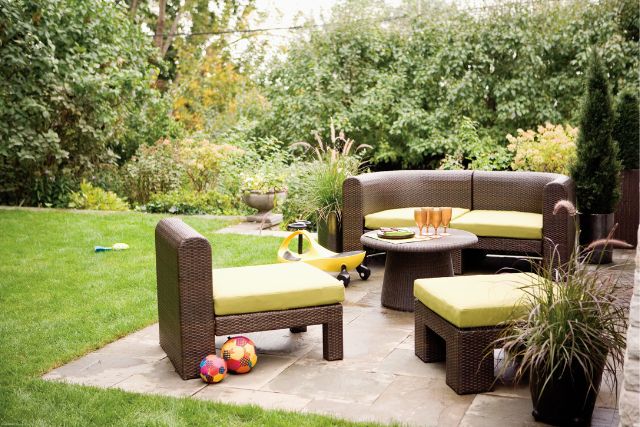Looking to spruce up your outdoor space and make your resin plastic patio furniture shine like new?
We will discuss the importance of cleaning resin plastic patio furniture, the tools and materials you will need for the job, and step-by-step instructions on how to effectively clean and maintain your furniture.
Say goodbye to stubborn stains and hello to a fresh and inviting outdoor oasis with these simple cleaning tips!
Why Is It Important To Clean Resin Plastic Patio Furniture?
Keeping resin plastic patio furniture clean is crucial for maintaining its appearance and longevity, as well as ensuring a healthy and enjoyable outdoor environment for your family and friends. According to the Washington State Department of Health, regular cleaning can prevent the buildup of dirt, mildew, and mould, which are not only unsightly but could also pose health risks.
Take a look: How To Install Resin Patio
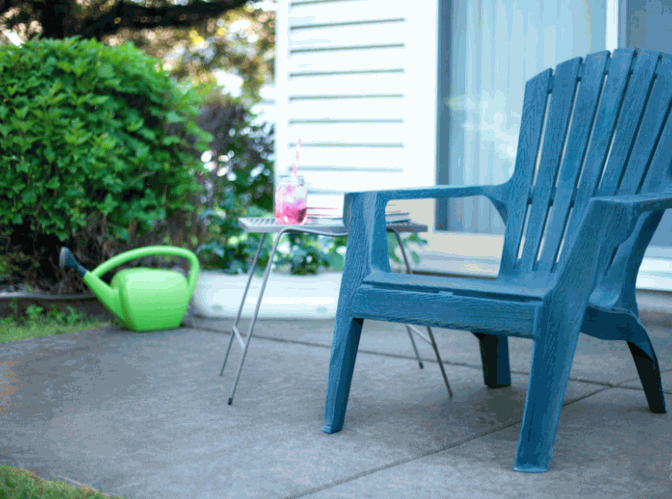
What Tools And Materials Do You Need To Clean Resin Plastic Patio Furniture?
To effectively clean resin plastic patio furniture, you need a selection of tools and materials specifically designed to tackle various types of stains and dirt while being gentle on the furniture's surface.
Soft-bristled Brush
A soft-bristled brush is essential for light dusting and gently scrubbing away dirt without scratching the surface of your resin plastic furniture.
Using a soft-bristled brush ensures that you can effectively remove dust particles, debris, and other unwanted dirt from your furniture while maintaining its pristine appearance. The bristles are designed to be gentle yet effective, providing a thorough cleaning experience. It is recommended by cleaning expert Jessica Bennett to opt for a soft-bristled brush when cleaning resin plastic furniture to prevent any potential damage or scratches.
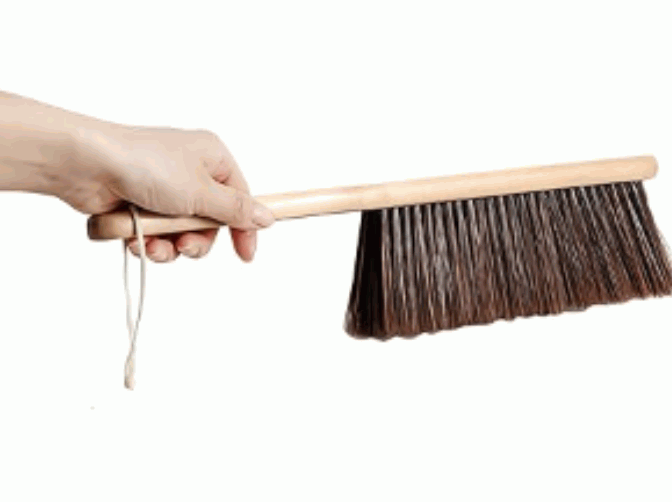
Mild Soap Or Detergent
Using a mild soap or detergent, such as dishwashing liquid, is effective for cleaning resin plastic patio furniture without causing damage or discoloration.
When cleaning resin plastic patio furniture, it is crucial to opt for gentle cleaning solutions to preserve its quality and longevity. Mild soaps like Castile soap or gentle detergents specifically designed for outdoor furniture are ideal choices. These types of cleaning products are formulated to effectively remove dirt and grime without harsh chemicals that can potentially harm the furniture's surface. By using gentle cleaning solutions, you can ensure that your patio furniture remains in top condition, free from any damages that may occur with harsher cleaners.
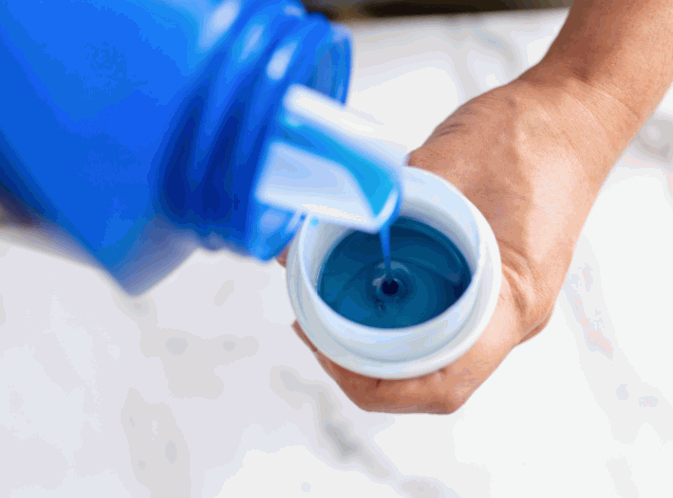
Water
Water is a crucial component in the cleaning process, used for mixing cleaning solutions and thoroughly rinsing off soap and dirt.
Water plays a significant role in ensuring effective cleaning by improving the efficiency of detergents and other cleaning agents. When combined with cleaning products, water helps to create the right concentration for optimal performance. Water aids in dissolving and diluting impurities, making it easier to wash away dirt and grime from surfaces.
According to the Washington State Department of Health, using clean water is essential to prevent the formation of residue that can lead to potential health hazards. Proper rinsing with clean water ensures that no cleaning agents are left behind, reducing the risk of skin irritation or contamination.
Bucket
A bucket is necessary for holding water and mixing cleaning solutions, making the cleaning process more efficient and organized.
Without a bucket, it would be challenging to carry out various cleaning tasks effectively. The versatility of a bucket allows it to hold not only water and cleaning solutions but also dirty rags, brushes, and other supplies needed during the cleaning process. A bucket serves as a portable station where different tools and materials can be stored while moving from one area to another. By having a dedicated bucket for cleaning tasks, you ensure that all necessary items are easily accessible and prevent clutter or spillage in the cleaning area.
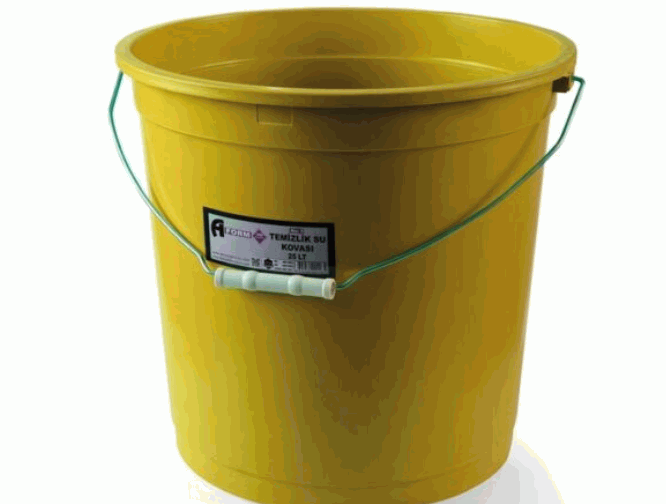
Garden Hose
A garden hose is essential for rinsing off soap and dirt, ensuring that your resin plastic patio furniture is thoroughly clean and free of residues.
Using a garden hose for rinsing provides several benefits when cleaning outdoor furniture. The high-pressure water stream helps to dislodge and wash away the soap and dirt efficiently. This makes it much easier to achieve a deep clean, removing grime that may have accumulated over time. The flexibility of the hose allows you to reach all corners and crevices of the furniture, ensuring that no spot is missed during the cleaning process.
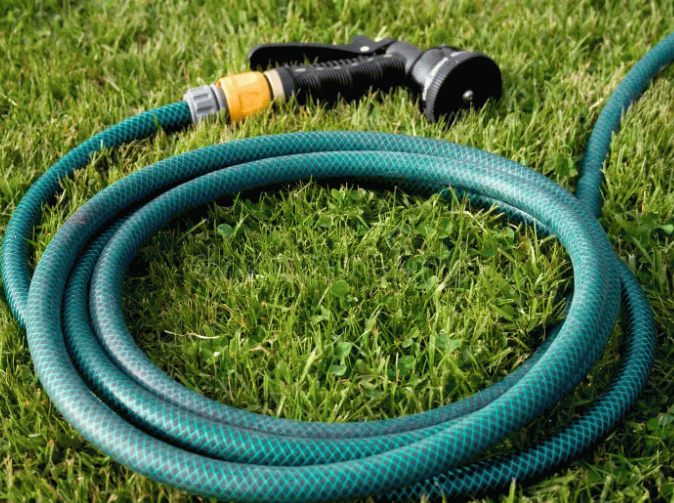
White Vinegar
White vinegar is a natural cleaning solution that is effective in removing stains, mildew, and mould from resin plastic patio furniture.
Due to its acidic nature, white vinegar acts as a powerful cleaning agent that helps break down tough stains on the surface of patio furniture. When applied, it penetrates the affected area, lifting the stains and dirt effectively without causing damage. The acetic acid present in white vinegar not only eliminates existing mildew and mould but also inhibits their future growth, making it a great preventive measure against these common outdoor furniture problems.
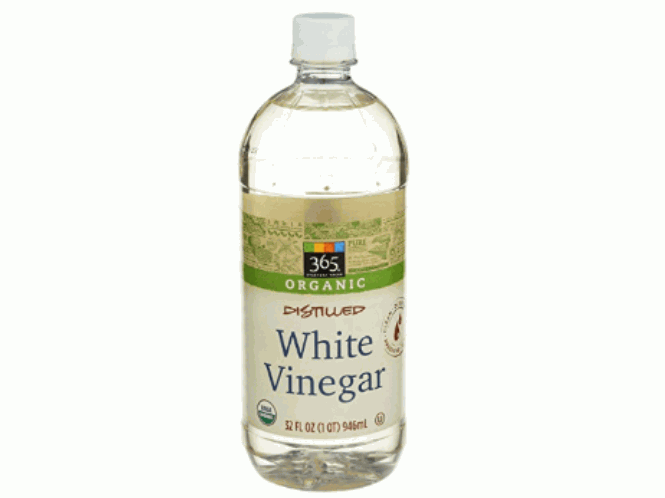
Baking Soda
Baking soda serves as a gentle, non-abrasive cleanser that can effectively remove stains without damaging the surface of resin plastic patio furniture.
Regarding cleaning, baking soda is a versatile household item that can be used in various ways.
- To utilize its stain-removing power, create a paste by mixing baking soda with water, making sure it has a consistency similar to toothpaste.
- Apply this paste directly on the stained area of the furniture, gently scrubbing it with a soft cloth.
- The mild abrasiveness of the baking soda helps to lift the stain without scratching the surface.
- Its deodorizing properties leave your patio furniture smelling fresh and clean.
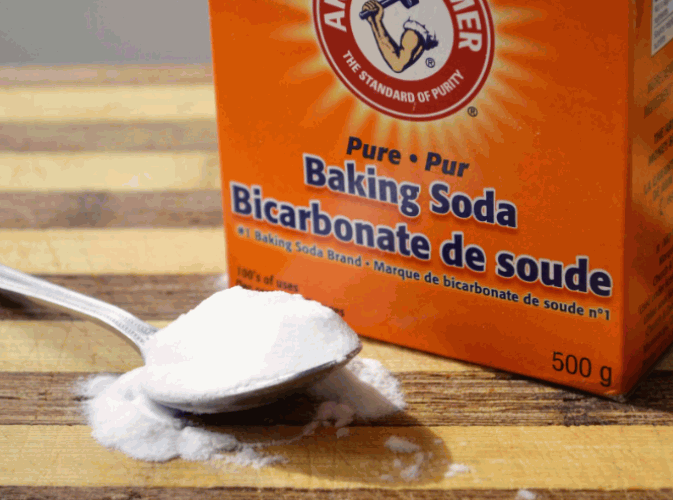
How To Clean Resin Plastic Patio Furniture?
Cleaning resin plastic patio furniture requires a systematic approach to ensure that all dirt and stains are effectively removed without causing damage to the furniture. Following expert tips from sources can make the process easier and more efficient.
Remove Loose Dirt And Debris
Begin by removing loose dirt and debris from the surface of the furniture using a soft-bristled brush for light dusting.
Take care to start at the top of the furniture and work your way down to catch all the particles effectively. For intricate carvings or hard-to-reach crevices, a gentle vacuum attachment can be handy to suck up any hidden debris.
For more stubborn dirt or sticky residue, a damp microfiber cloth with a mild soap solution can be used. Avoid harsh chemicals that could damage the surface of the furniture. Remember to dry the furniture completely after this step to prevent any water damage.
Prepare A Cleaning Solution
Next, prepare a cleaning solution by mixing water with a mild detergent in a bucket.
Ensure that the water is at room temperature to help the detergent dissolve effectively. A good ratio to follow is around 1-2 tablespoons of detergent per gallon of water, but this can vary depending on the strength of the detergent and the level of cleaning required. Stir the mixture gently to combine the ingredients without creating too many suds.
For general cleaning purposes, opt for a neutral pH detergent to avoid damaging surfaces. For tougher stains or grease, consider using a specialized cleaner such as a degreaser. Always read the manufacturer's instructions on the detergent packaging for specific guidance on dilution ratios and usage.
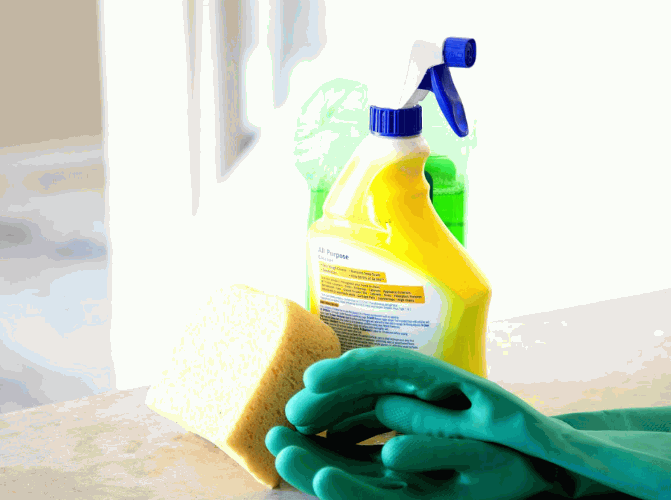
Scrub The Furniture
Using the soft-bristled brush, scrub the furniture with the cleaning solution to remove any embedded dirt and stains.
To effectively remove dirt and stains from furniture, it is essential to be thorough in the scrubbing process. Make sure to apply gentle pressure as you scrub to avoid damaging the material. As recommended by experts, it's important to work in small sections and focus on one area at a time. This method ensures that you give proper attention to each part of the furniture and achieve a more detailed cleaning.
Rinse Thoroughly
Once the furniture is scrubbed, rinse it thoroughly with water using a garden hose to ensure all soap and dirt are removed.
Rinsing is a critical step in the cleaning process as any leftover soap residue can attract more dirt and grime, leading to a less effective cleaning job.
When using a garden hose, make sure to adjust the water pressure to a gentle flow to avoid causing damage to the furniture surface. Begin from the top and work your way down to ensure complete coverage and thorough rinsing.
Pay close attention to crevices and corners where dirt can easily accumulate, ensuring that all areas are adequately rinsed for a clean finish.
How To Remove Stubborn Stains?
Removing stubborn stains from resin plastic patio furniture requires more specialized techniques and solutions, such as using vinegar and baking soda paste or a commercial cleaner recommended by Home Improvement Ideas.
Use Vinegar And Baking Soda Paste
To tackle stubborn stains, apply a paste made of vinegar and baking soda directly onto the stain and let it sit for a few minutes before scrubbing.
This simple yet effective DIY cleaner works wonders due to the natural acidic properties of vinegar, which helps break down the stains, coupled with the gentle abrasiveness of baking soda that aids in scrubbing away the dirt.
The paste not only cleans effectively but also deodorizes, leaving a fresh scent behind without harsh chemical fumes.
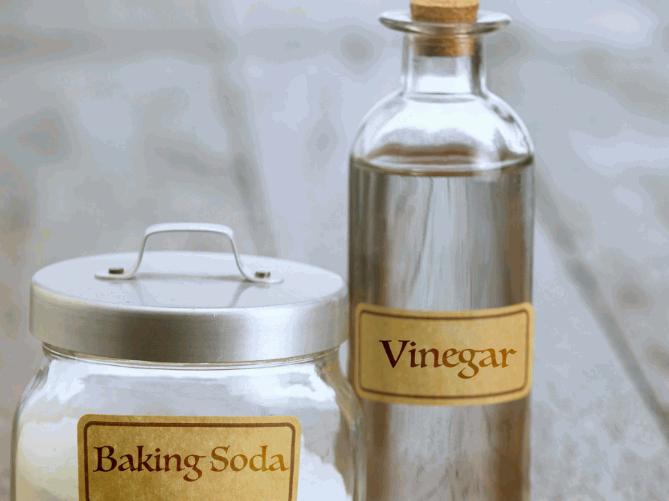
Try A Commercial Cleaner
If the stains persist, consider using a commercial cleaner specifically designed for outdoor furniture, as recommended by Home Improvement Ideas.
Commercial cleaners come in various formulations to target different types of stains, such as mildew, grease, or bird droppings. They are effective at removing stubborn stains that regular cleaning methods may not tackle.
Before using a commercial cleaner, it's advisable to refer to expert advice on the appropriate product for your specific furniture material and stain type. Always follow the manufacturer's instructions carefully to ensure the best results while protecting the integrity of your outdoor furniture.
How To Maintain Resin Plastic Patio Furniture?
Proper maintenance of resin plastic patio furniture involves regular cleaning and protective measures to ensure its durability and pristine appearance, as advised by Tips Bulletin and BHG.
Cover The Furniture During The Winter Months
To protect your resin plastic patio furniture during winter months, cover it with a plastic tarp to prevent damage from harsh weather conditions.
Covering your outdoor furniture with a plastic tarp serves as a simple yet effective way to shield it from snow, rain, and wind. The tarp acts as a protective barrier, keeping the furniture dry and free from mould or mildew formation. Opt for covers specifically designed for patio furniture, which come in various sizes and shapes to fit different pieces snugly.
When securing the tarp over your furniture, ensure it is tightly fastened to prevent it from being blown away by strong winds. You can use bungee cords, ropes, or straps to securely anchor the cover in place.
Regularly Wipe Down The Furniture
Regularly wiping down your resin plastic patio furniture with a microfiber cloth can help maintain its cleanliness and appearance.
Light dusting is crucial in preventing dirt and grime buildup, ultimately prolonging the life of your outdoor furniture. Apart from a microfiber cloth, you can also use a damp cloth for tougher stains or a soft-bristled brush for intricate designs.
When wiping down your patio furniture, pay special attention to crevices and corners where dust tends to accumulate. Consider applying a mild soap and water solution for a deeper clean, ensuring to dry the furniture thoroughly afterward to prevent any water damage.
Regular maintenance not only keeps your patio furniture looking its best but also helps prevent deterioration caused by neglect.
Store The Furniture In A Dry Place
Storing your resin plastic patio furniture in a dry place when not in use can prevent moisture-related damage and extend its lifespan, as recommended by Signature Hardware.
Exposure to moisture can lead to issues such as mould growth, warping, and discoloration of resin furniture. When stored in a damp environment, the material may degrade quickly, impacting its appearance and structural integrity.
To ensure your patio furniture stays in top condition, consider keeping it in a covered area or using furniture covers during wet weather. Using silica gel packets or a dehumidifier in the storage space can help absorb excess moisture. By adopting these practices, you can enjoy your outdoor furniture for years to come.

